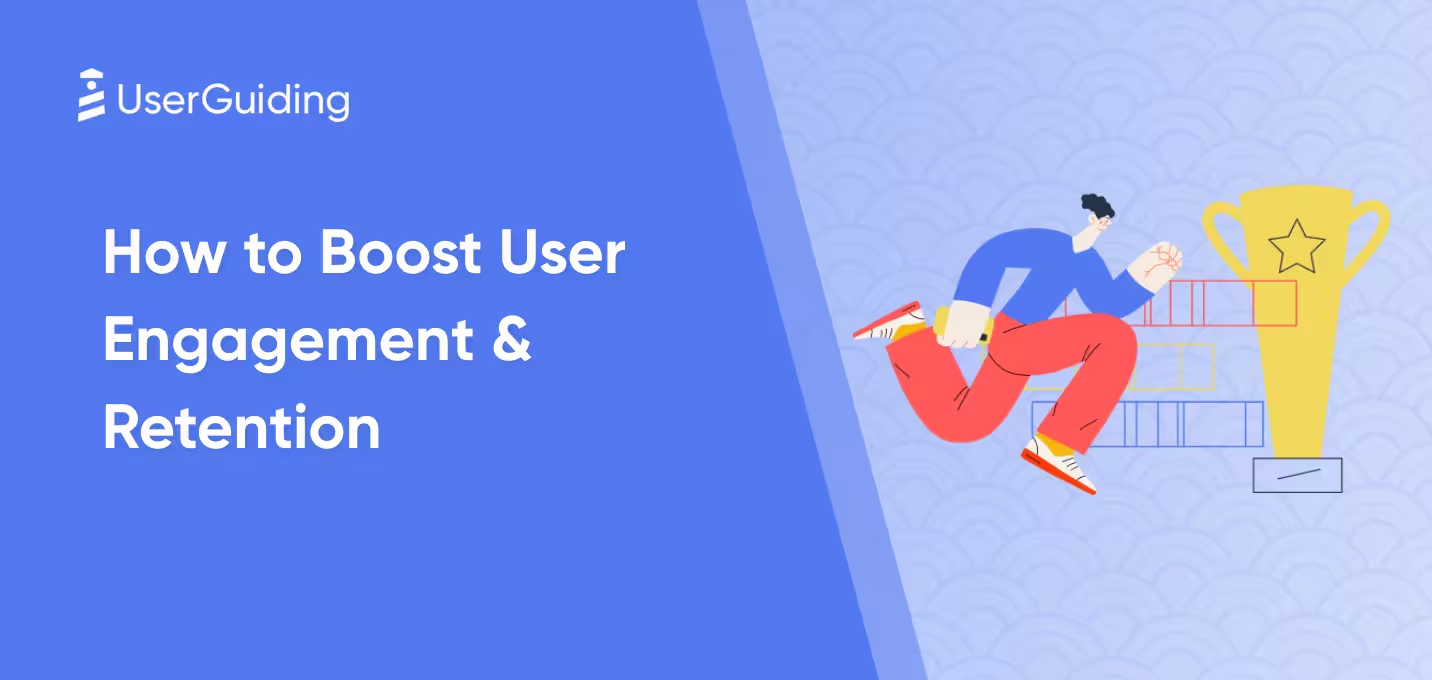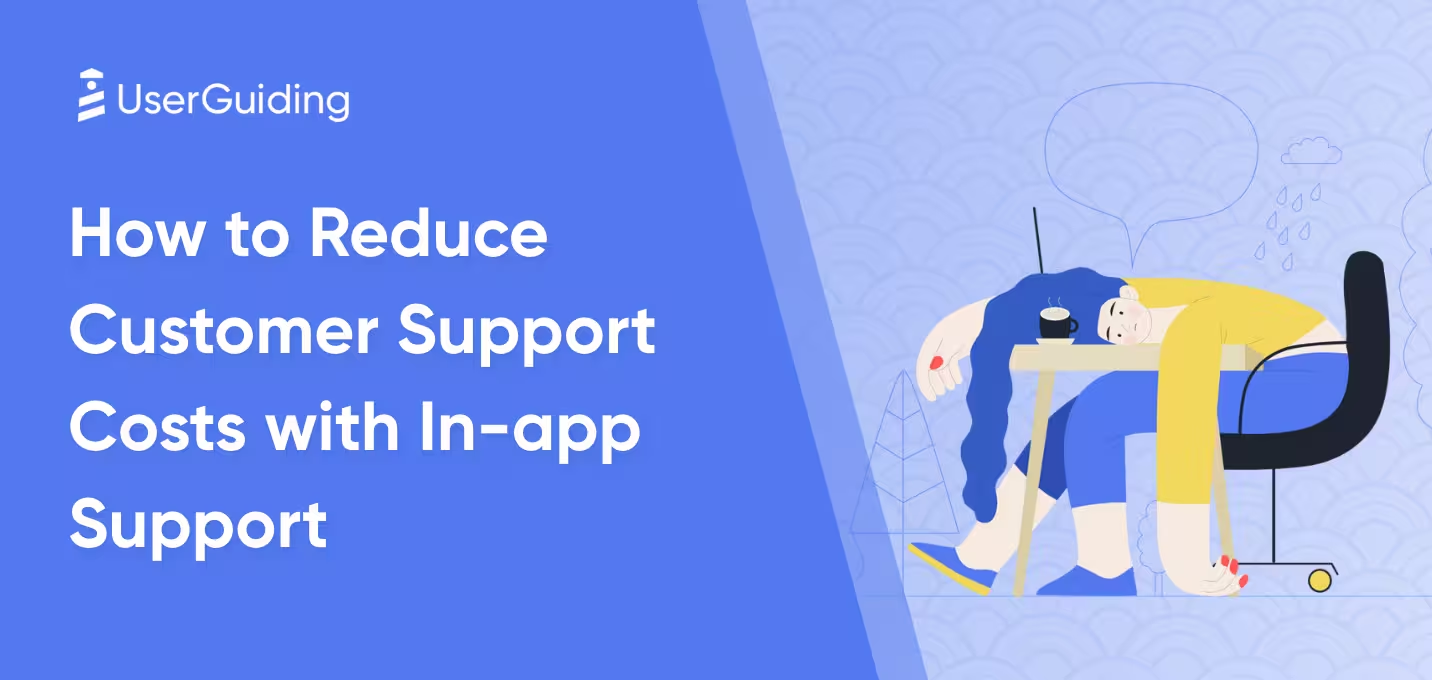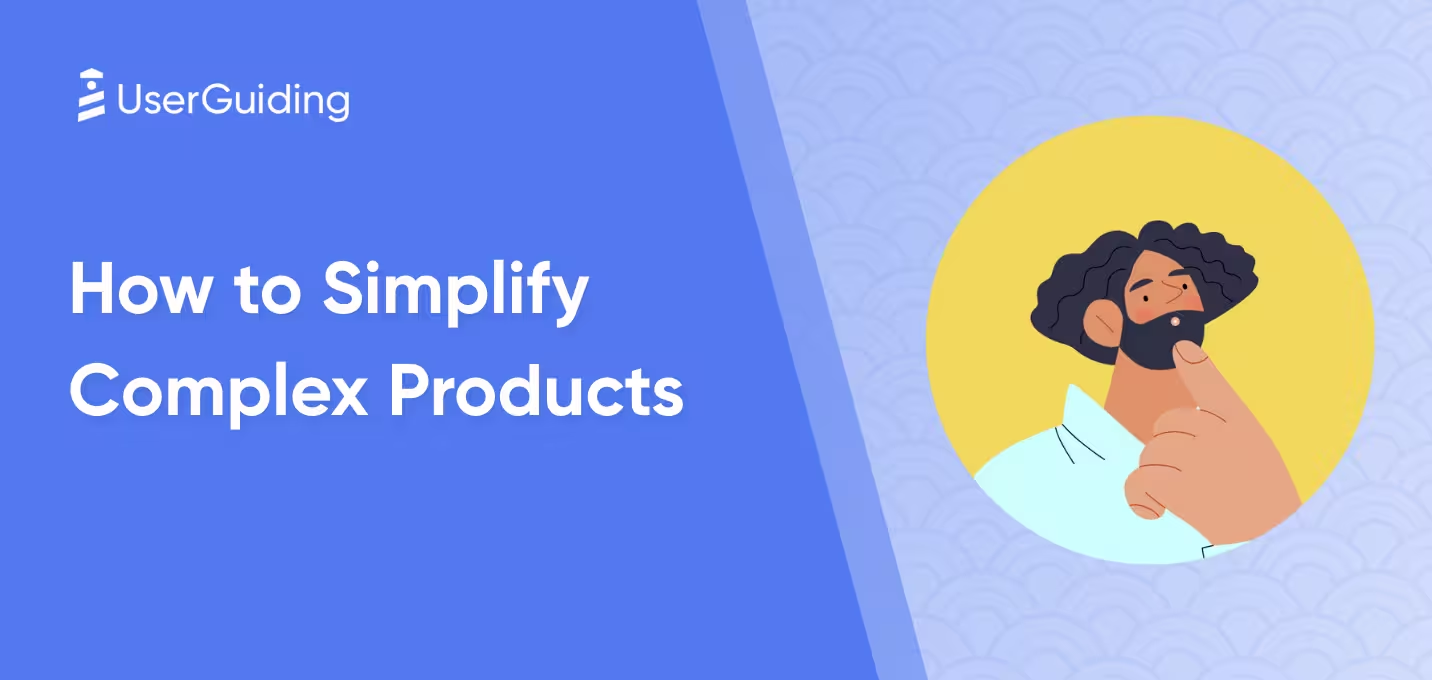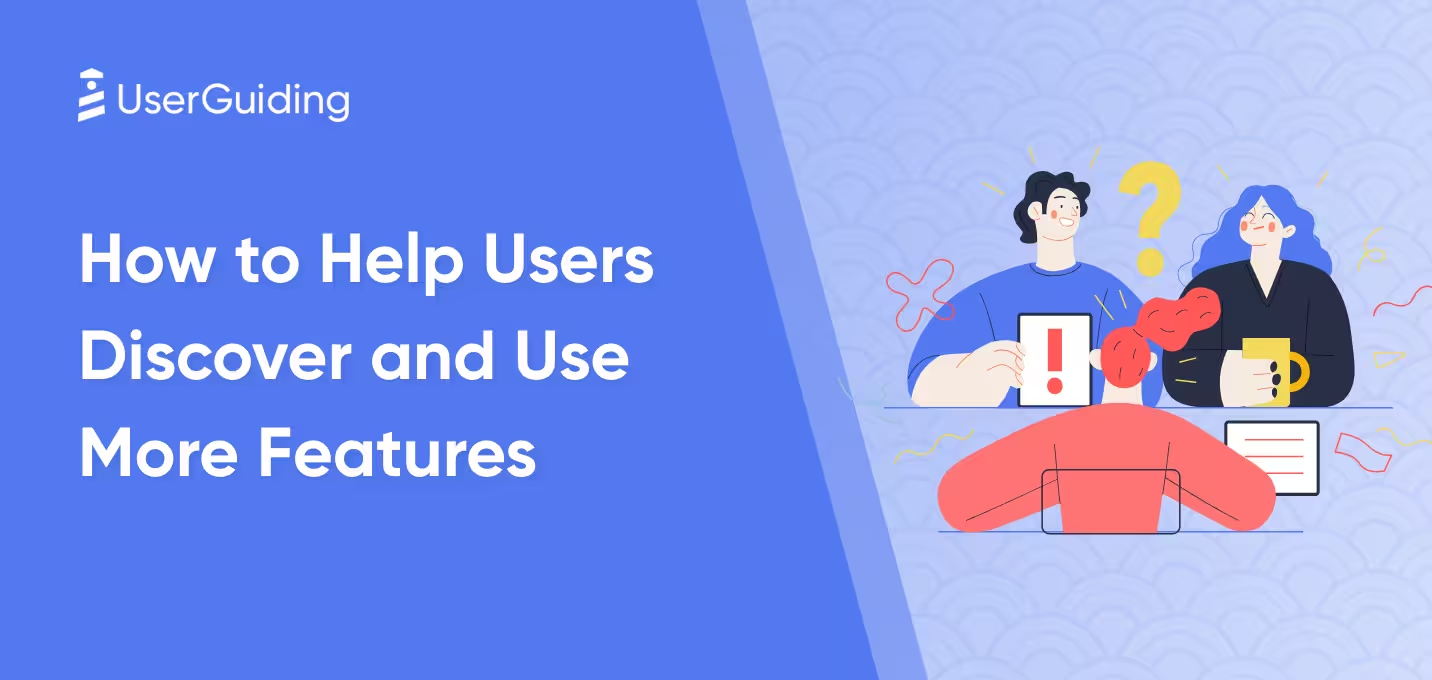

Salesforce found that 80% of users find user experience as important as the product and services you provide.
That means you could be offering a robust product with great features to 10 people, and 8 of them could go “meh” just because the product isn’t engaging enough.
Now that we don’t want to happen, so today, let’s talk about:
- What product engagement means for SaaS
- Some best practices to improve your product engagement,
- How you can measure your product engagement rate, and
- Some of the best tools out there to support your product engagement
Don’t have the time? Here’s the TL;DR ⬇️
TL;DR
- Product engagement is a measure of how users interact with your SaaS product, including metrics like DAU/MAU and session length.
- It is crucial for customer retention and growth, validating features, creating champions, and encouraging valuable feedback.
- Common challenges that hinder engagement include poor onboarding experiences, feature overload, and lack of personalization.
- Best practices to improve engagement include user segmentation, educating users about product value, and providing seamless onboarding experiences.
- Tools like Mixpanel, UserGuiding, and Hotjar can be utilized to measure and enhance product engagement, leading to improved retention and long-term customer success.
What is Product Engagement for SaaS?
Product engagement in SaaS is a measure of how users interact with your software, including features they use, frequency of visits, and time spent. It is also a direct measure of value, since high product engagement can lead to high retention, upselling and reduced churn.
Some important metrics in measuring product engagement include daily active users (DAU), feature adoption, and session length. But whatever metric you use, strong engagement is essential for driving SaaS growth and long-term customer success.
But why?
Why product engagement matters for customer retention and growth
Now, as we mentioned above, there are some pretty simple ways product engagement helps with retention and growth.
It is a solid value indicator, reduces churn, and creates upsell opportunities.
But what else?
1- Feature Validation
If a user engages frequently and mindfully with your product, you know they like your product.
If they do that with a specific feature, you know they like that feature.
And if enough people do that with a specific feature, you now know that you need to lean on developing that feature.
That means you’ll have a better feature, consequently more engagement, and in the end, more value, less churn, and possible upsells.
2- Creating Champions
SaaS is a battleground, especially in B2B.
You survive as long as you have champions to do your bidding, which is another benefit of high product engagement. When a user engages enough with your product, they inevitably become fans and, in the long run, even champions.
A champion’s natural instinct is to refer you to others, giving you more opportunities for higher product engagement and value.
3- Customer Feedback Loop
Lastly, an engaged user will almost always be more willing to offer feedback than an unengaged one. The good news is that their feedback will be packed with value.
That valuable feedback will again be a tool for a better product, higher product engagement, and a value cycle that keeps on giving.
Now, if product engagement is so good, why aren’t you doing it?
Or, more importantly, why is it failing for you?
Why You Might Fail: Product Engagement Challenges
There are as many product engagement challenges as there are product engagement strategies. A lot.
But there are also some that everyone should look out for.
Here’s a quick look at them:
1- Poor Onboarding Experience
The best way to completely shut off any chance of good product engagement is to overlook the importance of a good onboarding experience.
You can read that again.
The truth is that an onboarding flow is essentially the first impression your users will have of your product. If it’s bad, eventually, they will stop engaging with it.
So, don’t take the risk.
You can use different approaches like personalization, gamification, and self-service. And you can do all that in minutes using a tool like UserGuiding ⬇️

👉 Try UserGuiding for free today 👈
2- Feature Overload
The dose makes the poison.
Even water can be dangerous in large quantities for the human body, so why wouldn’t too many features position your product?
Offering too many features can seriously damage product engagement, as it can make it harder for users to discover your product in depth.
Feature overload very easily leads to user overwhelm, which leads to disengagement.
3- Lack of Personalization
You cannot engage users without getting up close and personal.
Epsilon finds that 80% of users are more willing to do business with businesses that offer personalized experiences, and 90% find this desirable.
So, a lack of personalization in your product might be an underlying reason for lower product engagement.
4- Inconsistent User Feedback
User feedback is essential.
But that doesn’t mean you need to collect it whenever you have a crisis and need to hear what users have to say.
User feedback is required before that so that you can steer clear before the crisis arises.
So, if you are inconsistent with your feedback operations, this can become a natural drawback to your product engagement.
5- Churn-prone User Segments
User segmentation is sophisticated work.
While some segments are easier to monitor and deliver to success, some user segments may be inherently difficult to engage. It’s important to acknowledge that engagement goals will be a little harder to achieve with this crowd.
But this doesn’t mean you can just do nothing about it.
What to do about it, though?
Best Practices to Improve Product Engagement: SaaS Roadmap to High Engagement
Though not all products garner the same amount of engagement, the strategies for a higher product engagement rate often align.
The main idea is to be present in all engagement stages.
Start by segmenting your users from the moment they sign up, educating them during use, and collecting feedback along the way.
But of course, there is some more to it than that. Here’s the full, beginner-friendly SaaS product engagement roadmap:
#1- Segment your users for a personalized experience
Can you increase product engagement without segmenting your users? Yes.
Can you keep it up? Unlikely.
For the last few years, we’ve established that user segmentation is not a choice but a must.
Without a thought-through user segmentation system, increasing product engagement is pretty hard.
Even if you do, you will be mostly blind to what made the change for the better and have problems keeping it up.
To avoid that, you have 3 preparations to make:
1- Create user personas to identify different needs
You might or might not have existing personas.
In either case, you might have to put some work in that area.
If you already have personas, they might be misleading if designed without engagement in mind. If you don’t have personas, it is high time you created some.
Ideally, keep the selection small and choose 2-3 user personas that are truly necessary to distinguish between.
You might have personas that are based on the plan they purchase or a similarly vague selection. The bad news is, it needs some more specifications.
Ask yourself:
- Who are they?
- What’s their role, industry, and company size?
- What do they want to accomplish with your product?
- What KPIs do they have? What does success look like for them?
- What are the pain points they face?
- What are the challenges that you can solve? What is the source of the challenge?
Answering these questions will give you a clearer picture of who your customers really are.
But if you wanna check out the next steps, here’s our 5-step guide to creating user personas 👈
2- Track and analyze user behavior through data and feedback
User profiles can take you so far.
At one point, data needs to be included in your process for the best results, and the best way to do that is to turn to behavioral analytics and user feedback.
Now, if you already have a system in place, the only advice there would be to stay consistent with it. If you don’t have a process, there are good tools that can minimize extra effort.
For example, Hotjar is a great tool for cracking user behavior secrets with heatmaps and session recordings.

For user feedback, UserGuiding’s in-app surveys are a great solution with complementary user experience tools. Try them for free today.
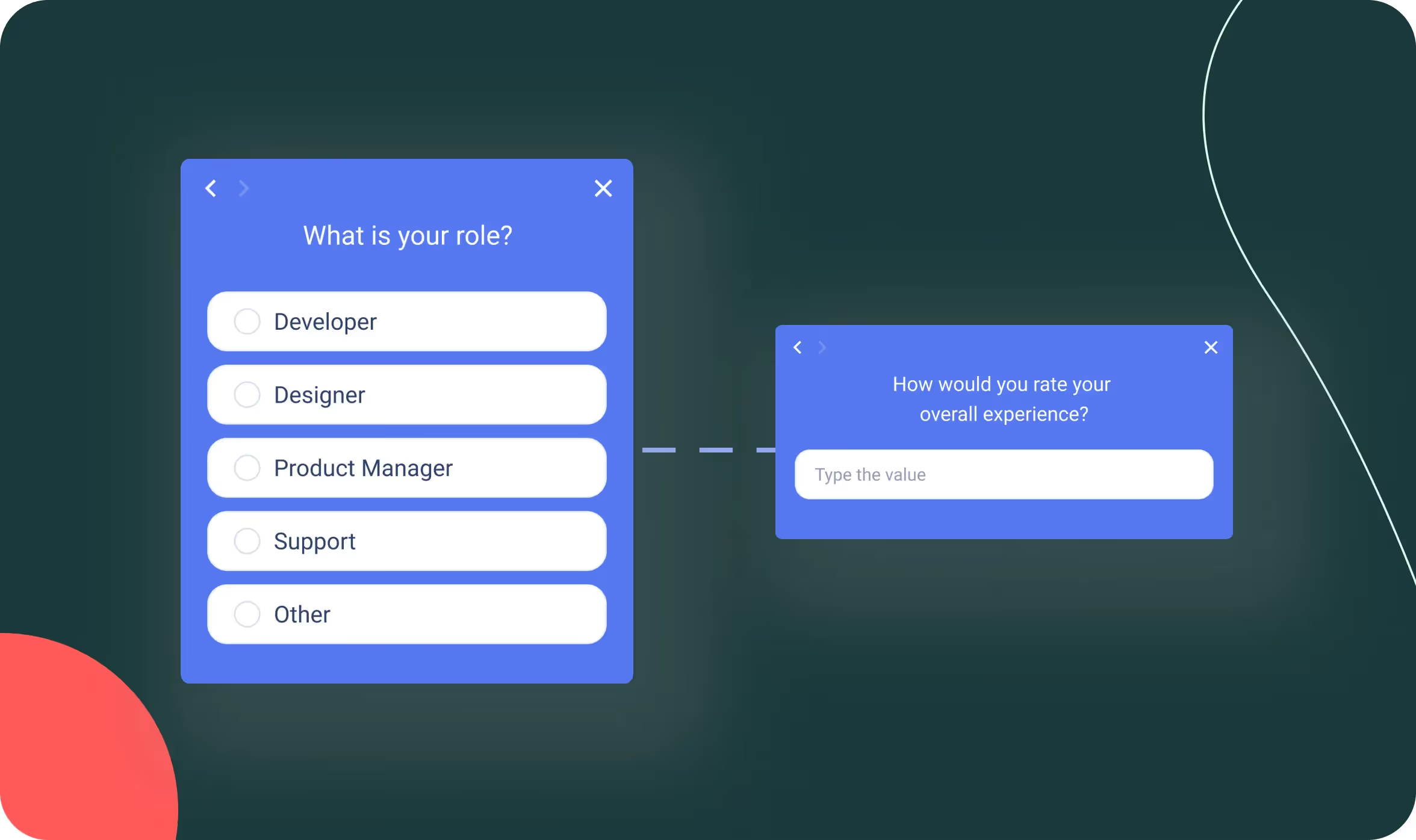
Check out our product analytics tools article to find out the best option for you 👈
3- Build targeted strategies from marketing to product design
During the segmentation leg of the engagement marathon, a best practice I can’t emphasize enough is to go holistic with your strategy.
Now that you have your user personas and insights into their behavior, you can reshape your product and operations to serve engagement.
This needs to happen with targeted strategies embedded in your entire approach to engaging your users. So, take the time to infuse your findings into your product while aligning with your team.
This can involve targeting specific leads in sales, aligning your target audience with your user personas in marketing, or creating more appealing product experiences.
The idea is to approach the matter holistically and in sync with your entire team.
#2- Educate users about your product’s value
Once you get to know your users better, it is time for them to know you better.
A portion of your users will almost always be clueless about the actual real value of your product, and the problem often lies in a lack of good education.
This does not mean you need to create courses and certificates around your product. You don’t have time for that, and neither do your users.
The solution is simpler.
4- Design a seamless and interactive onboarding experience
You can engage your users in many ways.
When it comes to product engagement, however, at one point or another, you will need an interactive onboarding experience.
Precursive found that poor onboarding is the third most important reason customers churn, the first and second reasons being the wrong product fit and lack of engagement.
This tells us that the onboarding experience is almost as important as your product engagement.
So, let’s take it seriously. You are going to want to be careful with 3 principles:
- For a truly seamless experience, you’ll want to treat the onboarding experience as a part of the overall user journey, which starts before users step into the product.
- Interactive elements, gamification, and personalization are your north star for better user experiences
- You need to make informed decisions with onboarding UX as well, don’t underestimate the difference reports and analytics can make for your operation
The good news is that you can find all that and more in UserGuiding. Try it for free today!
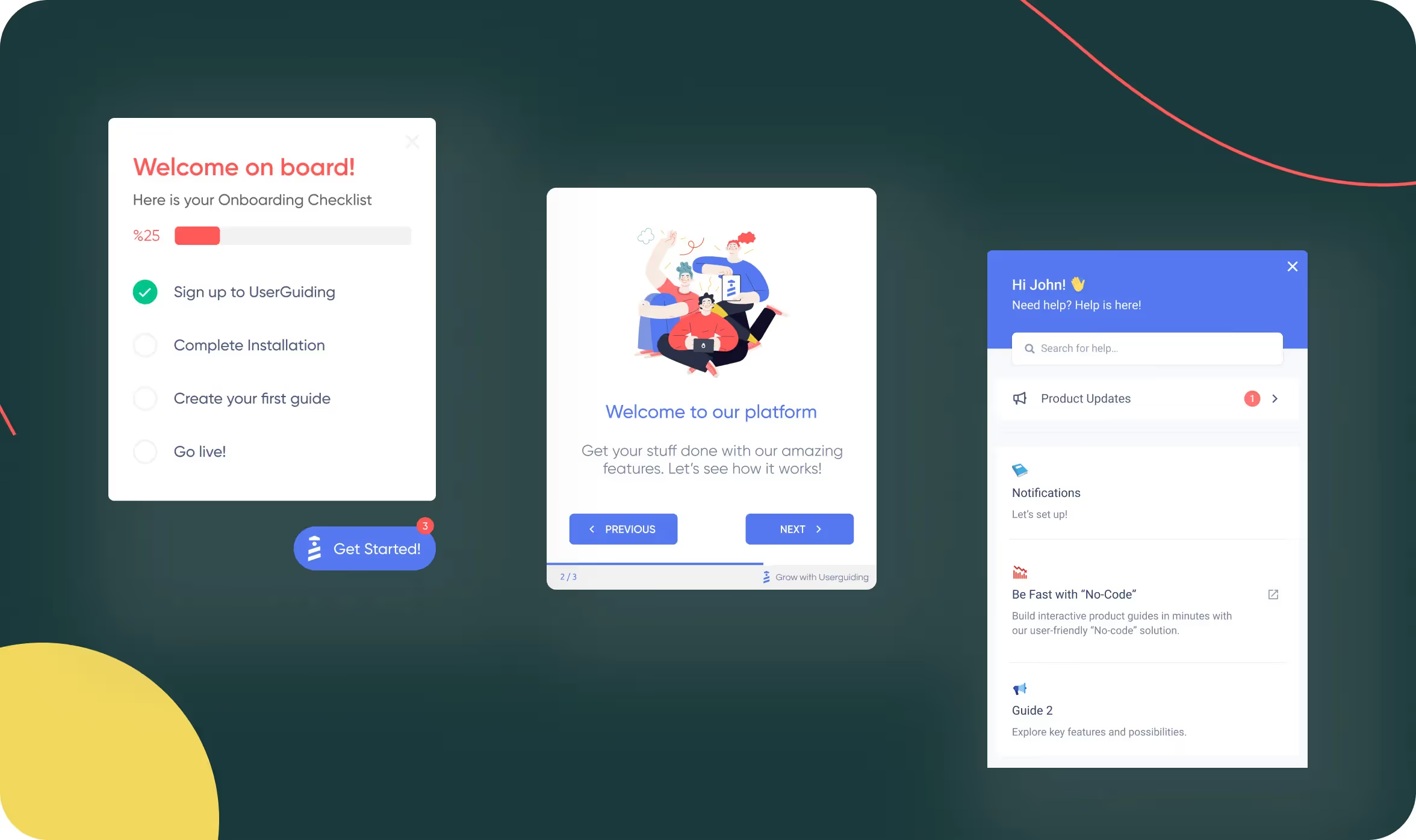
5- Use in-app messaging and notifications to keep users informed
A user onboarding experience is essentially just the start of any continuous product engagement plan. Going forward, there will be times you need to communicate with your users, and that’s when in-app messaging comes into play.
An in-app message can be as simple as a slideout modal, like this Canva example…
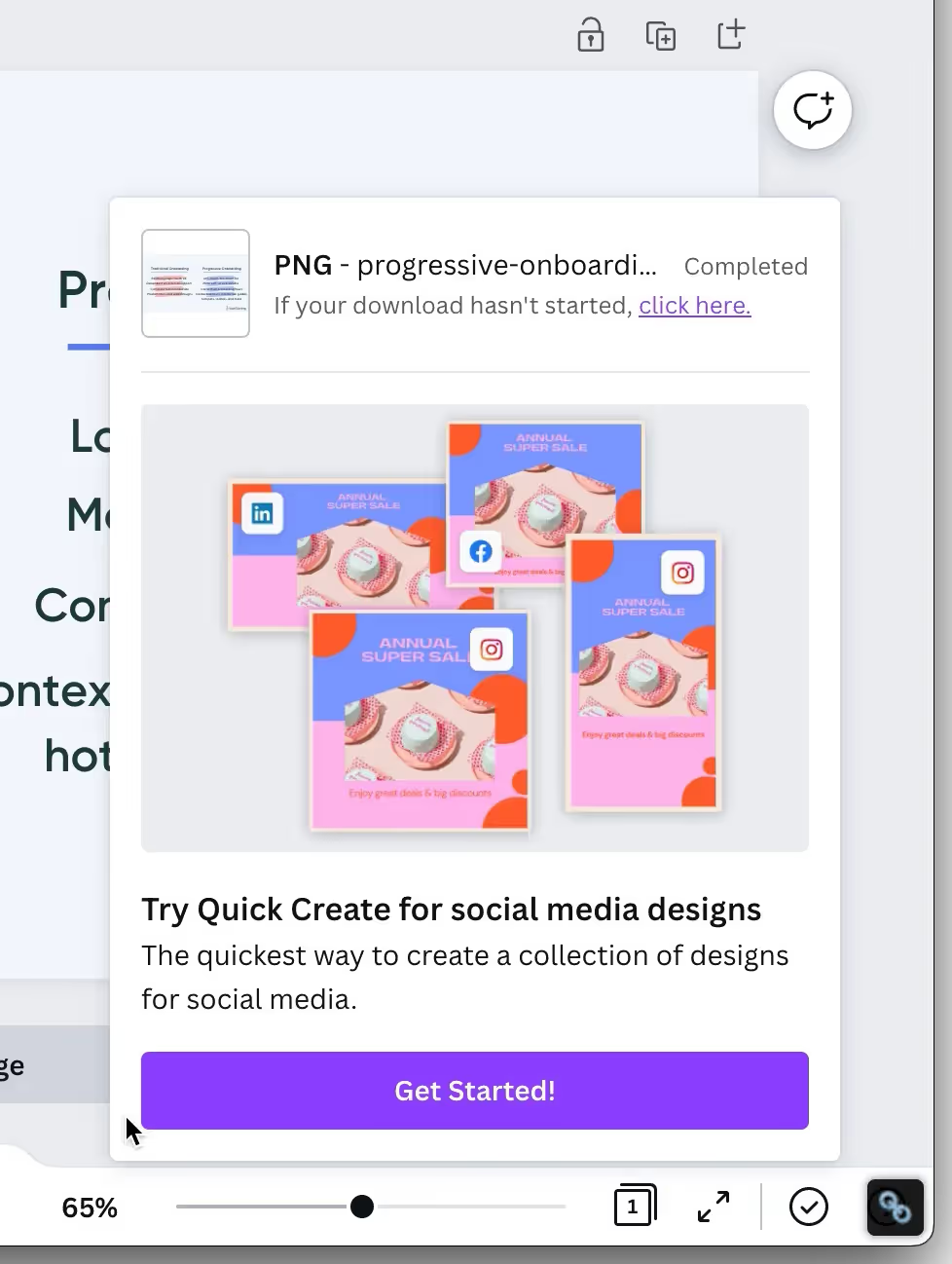
Or it can be as sophisticated as a Product Updates page, like Straico’s product updates page:
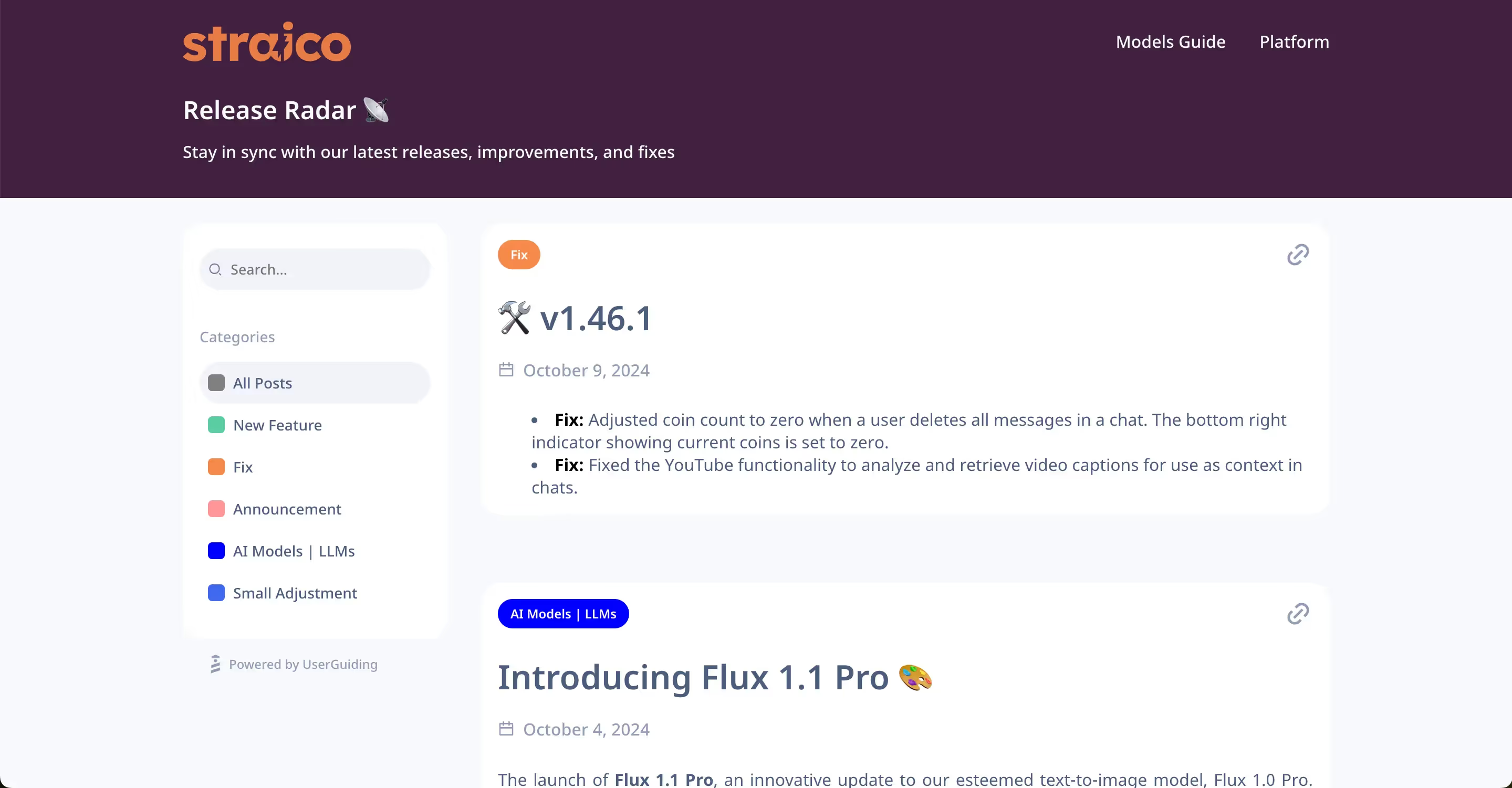
The point is to communicate value continuously, regardless of the tools you use.
Check out our guide to in-app communication for more 👈
6- Invest in self-service with a knowledge base
Now, you have a good first impression and a way of reaching out to your users when necessary.
But what about when it’s your users who need to communicate with you?
Zendesk finds that half of all consumers experience stress and feel exhausted when talking to customer support, which is a good enough reason for them to straight up not to reach out at all.
Now that doesn’t necessarily mean your users will feel the same way about your support.
But would it hurt to offer an alternative option that requires no contact and can potentially ease your support burdens?
That’s where UserGuiding’s Knowledge Base feature becomes relevant to you.
The Knowledge Base lets you create help articles, manage content however you like, and analyze user engagement with your content.

#3- Refer to user feedback for improvements
You’ve got the basics down, now is the time to enhance it according to the one thing that matters.
What your users want and need.
Now, the only way to know this is by collecting qualitative and quantitative feedback, and we have the chance to do that in 3 steps:
7- Encourage user feedback using easy-to-answer formats
To gather valuable insights, you need to lower the barriers to feedback.
There is a simple principle here: the simpler and quicker it is for users to respond, the more likely they will participate.
For example, 1-click surveys or emoji-based reactions after key interactions can yield greater participation than a survey with open-ended questions.
Microsoft finds that 77% of customers are more likely to provide feedback if it doesn’t require too much time or effort.
So, offering options like in-app surveys or quick polls not only encourages higher response rates but also makes users feel heard without overwhelming them.
The UserGuiding survey templates are a good example of this approach:
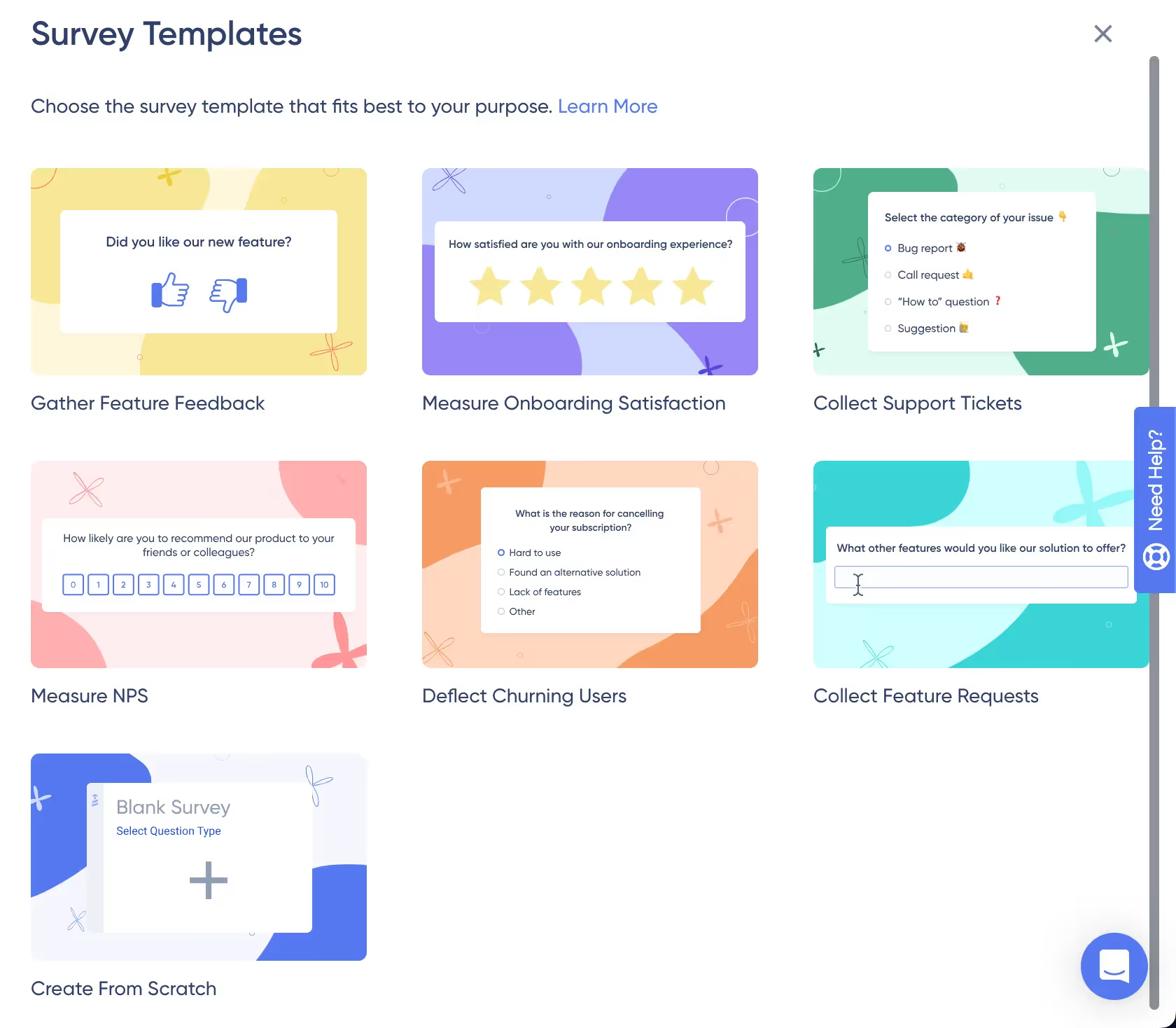
Check out In-App Surveys today 👈
8- Respond to the feedback for stronger relationships
Collecting feedback is only the first step for this stage of the plan.
You have to turn it into a dialogue. Why?
Engaging with feedback shows users that their voices matter, creating stronger bonds, and you want exactly that for lasting impact.
Statistically speaking, 83% of customers value businesses that actively respond to and act on feedback, so using this to foster trust is an essential strategy.
9- Reduce friction using quality user feedback
You cannot take every feedback seriously.
There will be feedback that is beyond you and feedback that turns out to be unrelated to your product. After all, there are all types of users and feedback.
But among all that feedback, there are some that are so spot-on that they can help you practically “fix” your product.
What we mean by that is the friction that can exist within any product, including yours.
Once you pinpoint the power users who are qualified to tell you what might be hindering a smooth user experience with your product, that is the feedback you take seriously.
That’s how you achieve higher satisfaction, better retention, and, more importantly, meaningful product engagement.
Measuring and Interpreting Product Engagement
Metrics to track for measuring product engagement
Tracking the right metrics gives you a clear window into how engaged users are with your product. Here are the most critical ones:
1- Daily Active Users (DAU) and Monthly Active Users (MAU)
These metrics indicate how many unique users engage with your product daily and monthly, respectively.
A growing DAU/MAU ratio reflects high user engagement and product stickiness, which are also metrics that can be used to measure your product engagement.
2- Session Length
Session length is a metric that measures how long users spend on your platform in a single session.
While there is no specific formula for it, measuring this is easy.
Longer sessions typically suggest deeper engagement with your product, while shorter sessions indicate less engagement.
3- Feature Adoption Rate
Feature adoption rate tracks how many users adopt specific features over a specific period of time.
This helps identify the most valuable parts of your product and can guide feature development.
The formula for feature adoption looks like this:

4- Retention Rate
The percentage of users who continue to use your product over a defined period gives us the retention rate of your product.
As you can see in the formula below, a high retention rate signals good product engagement and user satisfaction.

5- Churn Rate
The churn rate is essentially the opposite of retention. It’s the percentage of users who stop using your product.
Lower churn means higher engagement, as suggested in the churn rate formula below:

Need more metrics? Check out our product engagement metrics article here 👈
How to get insight from product engagement data
To make things more actionable, here’s a streamlined 3-step approach for extracting meaningful insights:
1- Identify Key Metrics and Segment Your Users
“Grab the metrics we’ve mentioned above and get to work!” would be the easy way out, but the truth is, depending on your product, you will likely not need all of them.
So pick the most important and relevant metrics, preferably no more than 3 in the early stages.
Remember the user segments we discussed? It’s time to use them by breaking down the data by user segment.
Again, don’t go overboard with the segments, either. First, try to create an analysis using the data you’ve fetched from the most important user segments.
Now you know how different segments engage with your product, backed with data.
For example, here’s how you can do that using UserGuiding:

2- Analyze Trends Over Time
Now, you have pillars of information in front of you.
But they are just information if you don’t use them to fuel decision-making or growth. So, we play the long game here.
Look at how these metrics change over time, and ask yourself:
- Are there seasonal spikes in usage?
- Is there a gradual decline or increase?
- Do you need to be monitoring different metrics?
Compare these trends across different user segments to identify patterns that might suggest areas of improvement or success.
3- Correlate Engagement with Feedback
Hard data is good, but it can be hard to understand without context.
As you examine product usage data and trends over time, remember to contextualize them, which in our case, are user feedback, session recordings, NPS, and other KPIs.
The differentiator is what your product needs and what you collect.
In practice, this will be you figuring out why feature adoption is low in the graphs through user feedback telling you they don’t like the new features.
As you bring data, time, and context together, it is no trouble to manage product engagement insights.
But of course, you don’t have to handle it all by yourself.
Let’s take a look at…
Best Tools for Higher Product Engagement
A higher product engagement rate is never guaranteed. But there are tools to make sure you get as close as possible.
Here are 3 tools that can help measure and improve product engagement:
1- UserGuiding
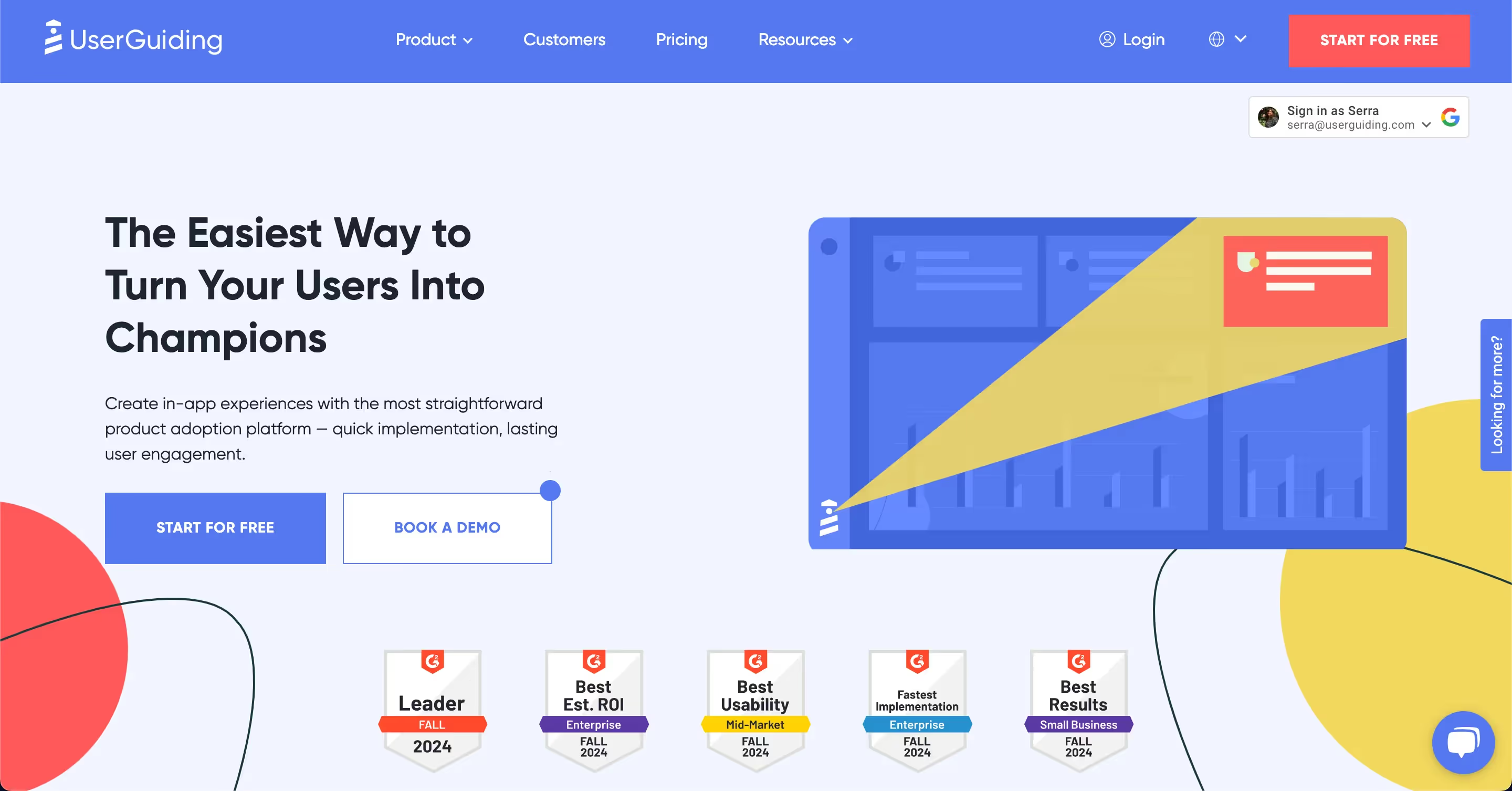
UserGuiding is perfect for both measuring and improving product engagement.
With interactive onboarding experiences, in-app surveys, knowledge bases, and a product updates feature, the tool is fully aimed at enhancing engagement from the first touchpoint.
The analytics dashboard and reports make it easier to make sense of these improvements in the long run.
UserGuiding Pricing
UserGuiding offers a free trial along with 3 plans with adjustable MAU ranges.
<2,000 MAU
Starter: $174/month.
Growth: $349/month.
Enterprise: Custom quote.
<5,000 MAU
Starter: $209/month.
Growth: $419/month.
Enterprise: Custom quote.
<10,000 MAU
Starter: $244/month.
Growth: $489/month.
Enterprise: Custom quote.
UserGuiding is mainly ideal for teams looking to improve in-app experiences and self-service without needing heavy coding or design.
2- Mixpanel
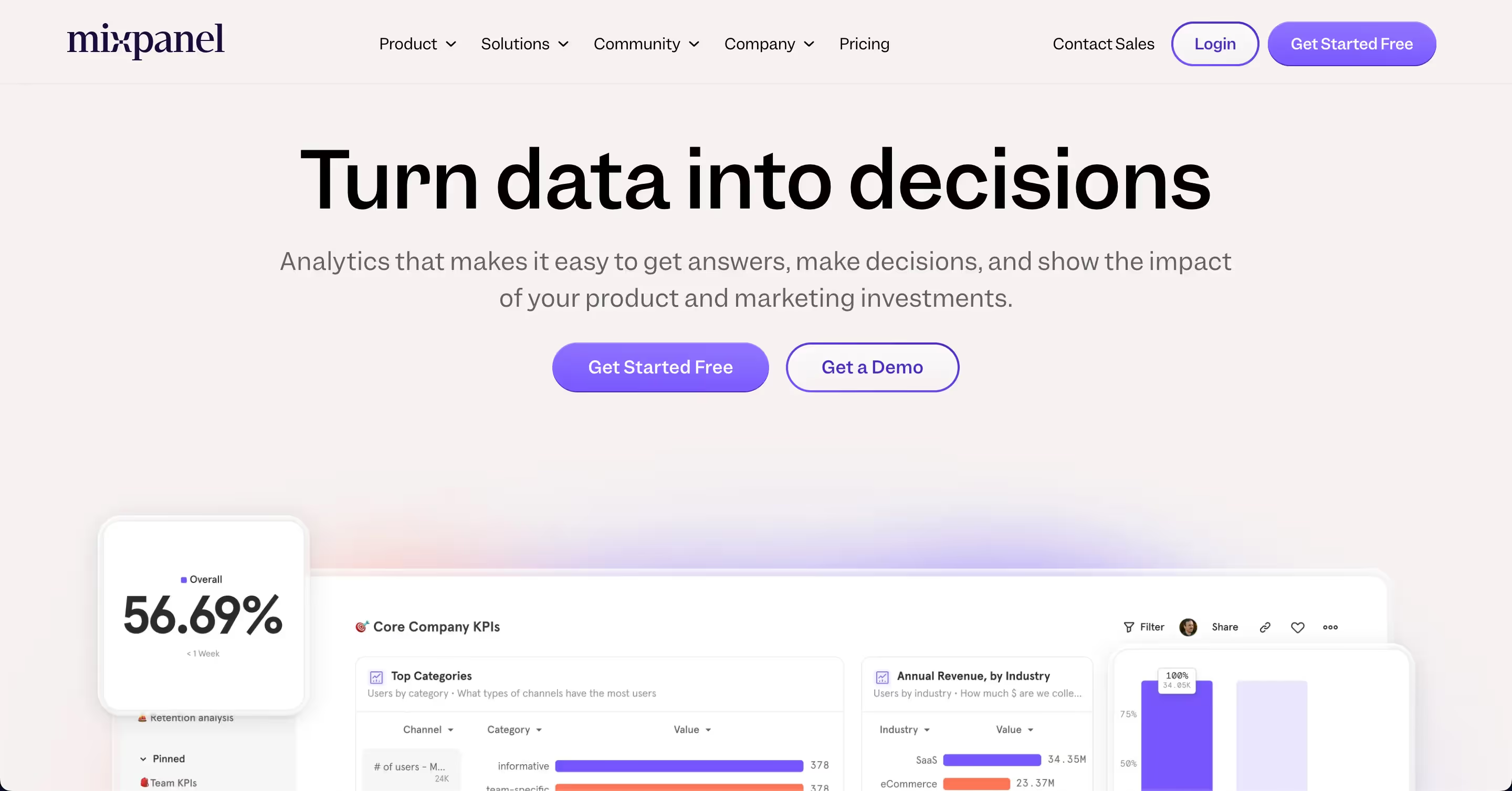
Mixpanel is your go-to tool for diving deep into user analytics.
It tracks key events like user actions, retention rates, and even cohort analysis, allowing you to pinpoint which features drive engagement and which don’t.
With its robust reporting, you can measure DAU/MAU, feature adoption, and retention in real time.
Mixpanel Pricing
Mixpanel offers a free plan for basic analytics and has 2 other plans for scaled usage.
The Growth plan, which features more advanced analytics, starts at $24/month, and the Enterprise plan requires custom quotation.
Mixpanel is best for SaaS teams looking to fine-tune user engagement and make data-driven product improvements.
3- Hotjar
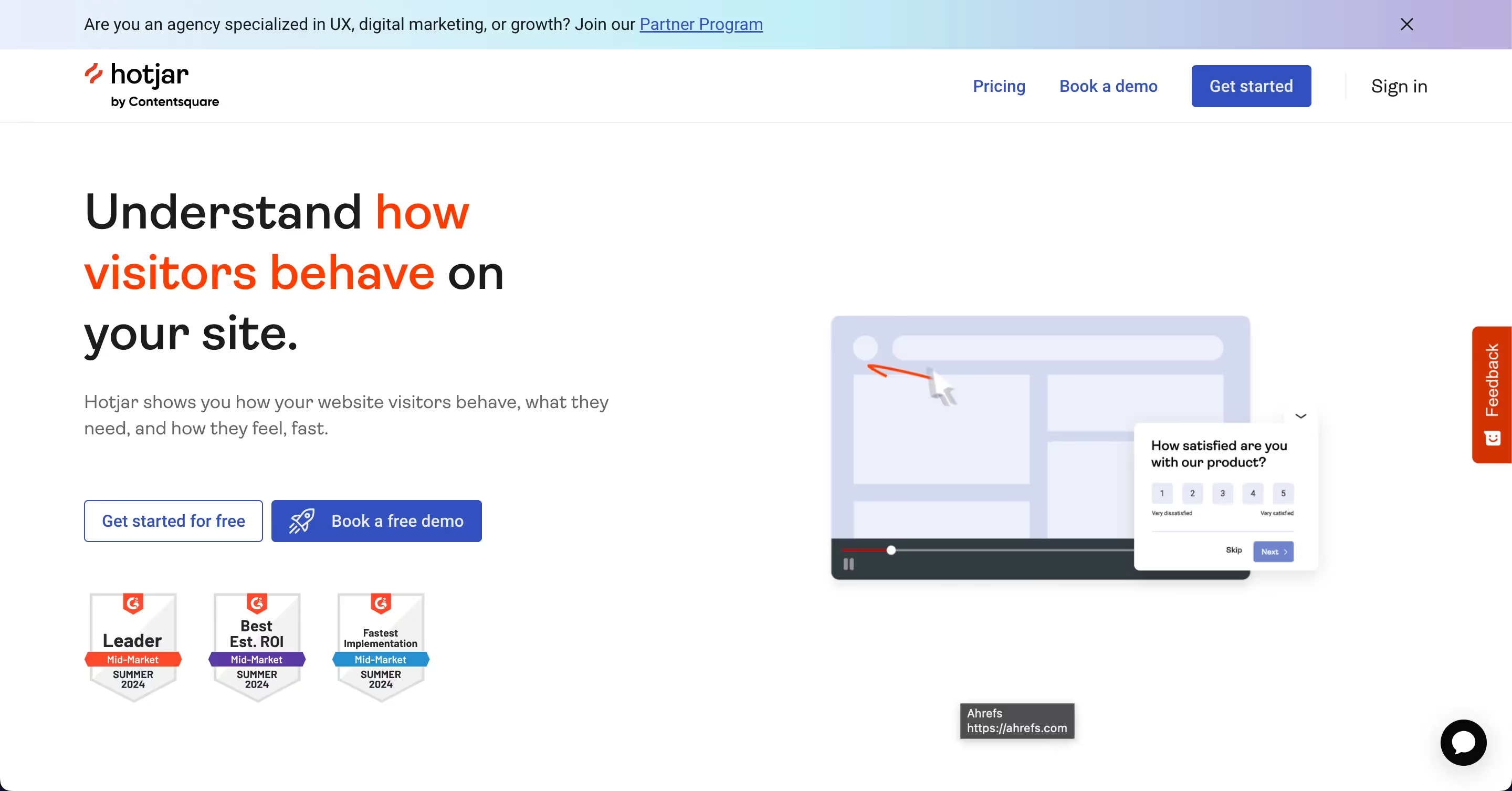
Hotjar gives you a visual take on user behavior with heatmaps, session recordings, and feedback tools.
It shows exactly where users are interacting most within your app, helping you optimize layout and design for better engagement.
Hotjar Pricing
Hotjar offers a free plan along with 3 other plans and a custom plan. The starting price for Hotjar is $32/month/100 daily sessions.
Hotjar is a great fit for teams that want to see user behavior in action and quickly identify where users struggle or excel within the product.
For more products to enhance your engagement, check out our guide to customer engagement platforms 👈
Wrapping Up
If nothing else, this guide has established one fact: Product engagement is essential for the success of any SaaS business.
It not only helps retain customers but also leads to valuable insights and product improvements. For that reason, we looked into best practices, metrics, and tools to make it work for you.
Enhancing product engagement is a whole process, but it has many benefits. Here’s to hoping you enjoy them.
In the meantime, you might want to consider checking out a product engagement software like UserGuiding, try for free today.
Good luck in advance 🍀
Frequently Asked Questions
What makes a product engaging?
A product can get more engaging with a few twitches in your product strategy, for example, by enhancing user experience and prioritizing user feedback.
What is a product engagement example?
A good example of a product engagement strategy is setting engagement metrics, following them in tandem with user feedback, and making necessary adjustments to the product’s UX.
What is an engaging product?
Many products are successful in their product engagement strategy. A good example is Slack, as the tool offers consistently good user experiences and keeps users coming back for more.

















.svg)
.svg)
.svg)
.svg)
.svg)

.svg)
.svg)












.svg)
.svg)




.png)





